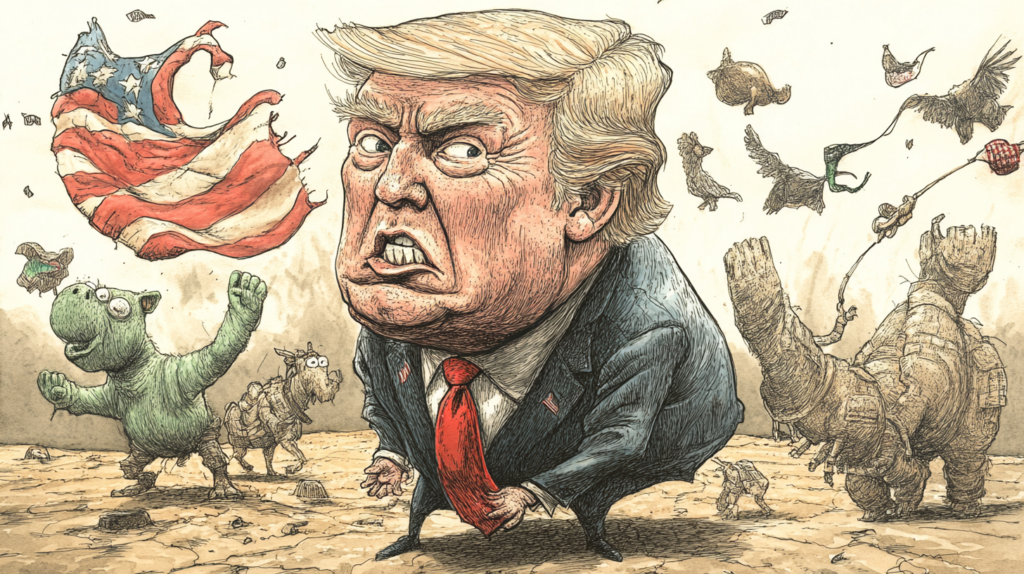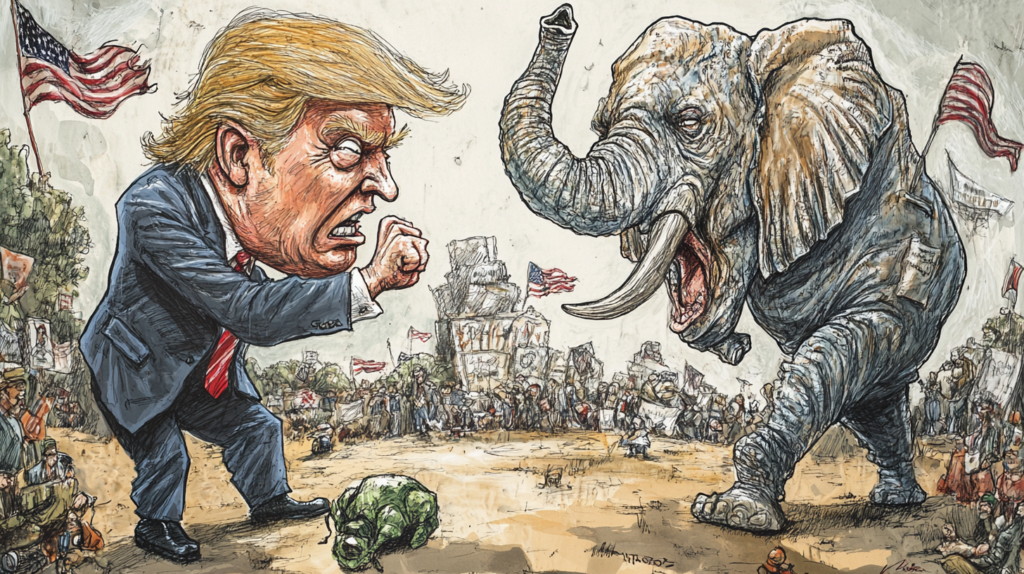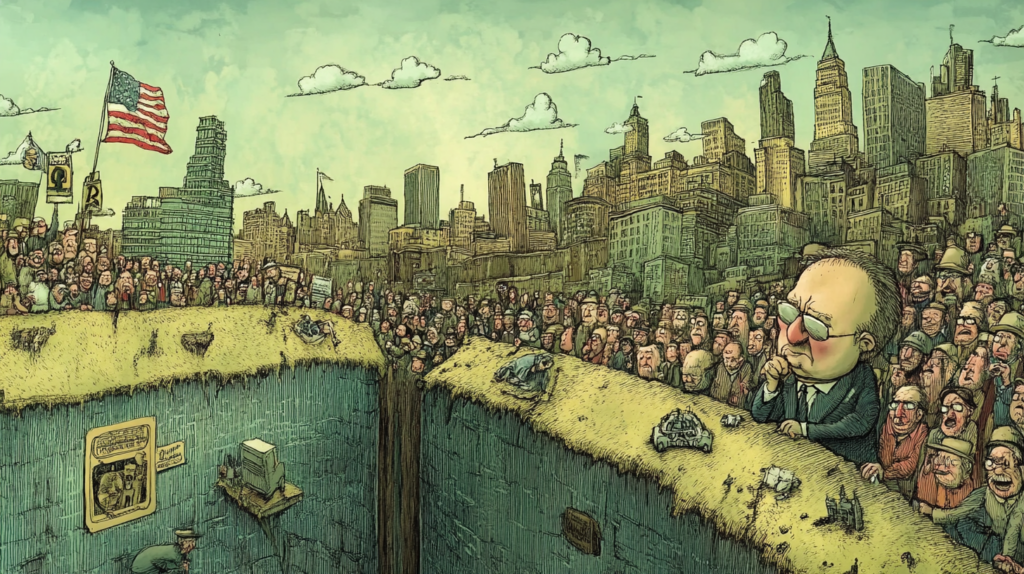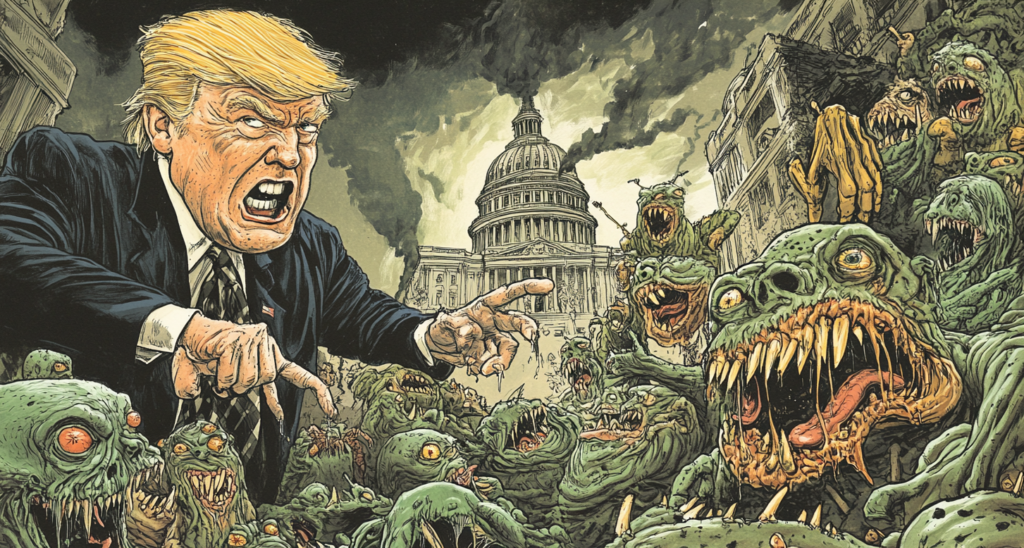Definition of Political Cartoons: Political cartoons are a powerful form of visual journalism that combine art and satire to comment on political events, leaders, and societal issues. These cartoons are often found in newspapers, magazines, and online platforms, where they provide quick, impactful critiques on current events. Political cartoons have long been a staple of public discourse, helping to shape opinions and provoke thought through humor, irony, and symbolism. As a cartoonist who frequently engages with political topics, I’ve seen firsthand how these works can influence public opinion and stimulate conversation. In this article, we will define political cartoons, explore their key elements, and examine their impact on public discourse.
What Are Political Cartoons?
Political cartoons are illustrated works that use satire, humor, and exaggeration to critique political figures, policies, and events. They aim to provoke thought, expose hypocrisy, and raise awareness of social, political, and economic issues. Unlike editorial articles, which use words to argue a point, political cartoons use visual metaphors and symbols to convey their message quickly and succinctly.
Key Characteristics:
- Visual Satire: Political cartoons use humor, irony, and exaggeration to criticize or mock political leaders, institutions, or events.
- Simplification: By distilling complex political issues into simple, recognizable imagery, political cartoons make these topics more accessible to the general public.
- Symbols and Metaphors: Common symbols in political cartoons include animals (e.g., the elephant for the Republican Party, the donkey for the Democratic Party in the U.S.), national icons, and caricatures of public figures.
- Timeliness: Political cartoons often respond to current events, making them relevant and impactful in real-time discussions.
Examples of Political Cartoons:
- Thomas Nast’s Cartoons: Nast, a 19th-century political cartoonist, used his art to expose corruption, most famously in his cartoons targeting Boss Tweed and Tammany Hall.
- Modern Political Cartoons: Artists like Patrick Chappatte, Ann Telnaes, and Zunar use their work to comment on current global political issues, from elections to human rights abuses.

The Purpose of Political Cartoons
Political cartoons serve several important functions in shaping public discourse. They provide commentary on current events, criticize political leaders, and offer alternative perspectives on government policies. Below are some of the main purposes of political cartoons.
1. Critiquing Political Leaders and Policies
One of the primary functions of political cartoons is to hold political leaders accountable by highlighting their mistakes, contradictions, or unethical behavior. By exaggerating certain features or actions, cartoonists make their critiques more visible and impactful.
Example: A cartoon depicting a politician as a puppet controlled by corporate interests might criticize that leader’s ties to big business. The imagery simplifies the complex issue of corporate lobbying, making it easy for the public to grasp.
Personal Insight: In my experience as a political cartoonist, I often use satire to expose political hypocrisy or corruption. Cartoons allow for a visual critique that words alone can’t always capture, and this imagery stays with the audience longer.
2. Simplifying Complex Issues
Political cartoons break down complex political or social issues into digestible images, making them easier for the general public to understand. Through exaggeration and symbolism, cartoonists can convey an entire argument in a single frame.
Example: During the financial crisis, many cartoons depicted the economy as a sinking ship, with bankers or politicians bailing out while ordinary people were left to drown. This simple visual metaphor conveyed the gravity of the situation more effectively than a long article might have.
Personal Insight: Political cartoons excel at simplifying complicated subjects like economic policies, social justice movements, or international conflicts. A well-crafted cartoon can communicate an argument in seconds, making it accessible to a wider audience.
3. Encouraging Public Engagement and Debate
Political cartoons often provoke public debate by addressing controversial topics or challenging the status quo. They spark conversations in homes, workplaces, and online platforms, making people reflect on their own opinions or biases.
Example: Cartoons critiquing government surveillance programs, such as those related to the NSA, have provoked public debates about privacy, security, and civil liberties. By putting these issues in front of the public eye, political cartoons encourage citizens to engage with important societal questions.
Personal Insight: I’ve seen how my cartoons have sparked conversations, especially when addressing contentious political issues. By using humor and satire, I can broach difficult topics in a way that invites discussion rather than confrontation.
4. Challenging Authority and Promoting Dissent
Political cartoons serve as a platform for challenging authority and promoting dissent. By using humor, irony, and satire, cartoonists provide a voice for those who oppose the actions of governments, corporations, or powerful institutions.
Example: During the civil rights movement, political cartoons were used to critique segregation and racism. Artists like Herblock created powerful images that challenged the status quo and advocated for social change.
Personal Insight: Political cartoons allow me to speak truth to power, whether it’s critiquing government policies or highlighting social injustices. The medium gives artists the freedom to address issues that might otherwise be ignored or downplayed by traditional media.

Key Elements of Political Cartoons
Political cartoons use a variety of visual techniques and artistic devices to convey their messages effectively. These elements help simplify complex issues and make the critique more impactful.
1. Caricature
Caricature involves exaggerating the physical features or behaviors of a person, often to mock or highlight specific traits. In political cartoons, caricature is commonly used to depict politicians or public figures in a humorous yet critical way.
Example: A political cartoon might depict a corrupt leader with exaggerated features, such as a large nose or pockets overflowing with cash, symbolizing their greed or dishonesty.
Personal Insight: Caricature is one of the most effective tools in a political cartoonist’s arsenal. By amplifying certain traits, I can make a powerful statement about a politician’s character or actions in a way that is both visually striking and humorous.
2. Symbolism
Political cartoons rely heavily on symbols to represent broader concepts or institutions. These symbols, often drawn from common cultural references, allow cartoonists to communicate complex ideas quickly.
Common Symbols in Political Cartoons:
- Animals: The donkey (Democratic Party) and elephant (Republican Party) are widely recognized symbols in American political cartoons.
- Uncle Sam: A personification of the United States, often used to represent the government or national interests.
- Scales of Justice: Used to represent fairness, law, and the judicial system.
- Broken Chains: Symbolizing freedom or liberation from oppression.
Example: A cartoon might depict Lady Justice blindfolded with her scales tipped by money to critique corruption in the legal system.
3. Exaggeration
Exaggeration is a key element in political cartoons, allowing artists to amplify certain aspects of a situation or individual to make a point more clearly. This technique can be humorous or biting, depending on the subject matter.
Example: A political cartoon might exaggerate a leader’s incompetence by showing them stumbling or lost in a maze of their own policies, symbolizing confusion or failure in governance.
Personal Insight: Exaggeration helps me create visually compelling cartoons that immediately communicate a message. By amplifying certain traits or behaviors, I can make my point more memorable and engaging for the viewer.
4. Irony and Satire
Irony and satire are essential tools for political cartoonists, allowing them to highlight contradictions between what is said and what is done. These devices often expose hypocrisy or the absurdity of certain political situations.
Example: A cartoon might show a politician giving a speech about environmental protection while standing in front of a factory belching smoke, pointing out the gap between rhetoric and reality.
Personal Insight: Satire allows me to address serious issues in a way that engages people without being confrontational. Irony often highlights the gap between promises made by leaders and the reality of their actions, making the critique more impactful.
5. Humor
Humor is often the hook that draws people into political cartoons. Even when dealing with serious or difficult subjects, humor can disarm the audience and encourage them to think more deeply about the issue at hand.
Example: A cartoon might depict a government as a circus, with politicians as clowns juggling laws and regulations, using humor to highlight the chaos or incompetence of the administration.
Personal Insight: Humor is key to making my political cartoons approachable. By using humor, I can address even the most sensitive topics in a way that invites reflection rather than alienation.

The Impact of Political Cartoons on Public Opinion
Political cartoons have historically played a significant role in shaping public opinion. Through their immediacy, humor, and visual clarity, they can shift the way people perceive political events, leaders, and policies.
1. Influencing Public Perception of Leaders
Political cartoons can shape how the public views political figures by emphasizing certain traits, actions, or policies. A powerful cartoon can leave a lasting impression of a leader, positively or negatively.
Example: During the 1970s, political cartoons depicting Richard Nixon as shifty and dishonest during the Watergate scandal helped solidify his reputation as untrustworthy in the public eye.
Personal Insight: I’ve seen how repeated caricatures of a leader’s flaws—whether their dishonesty, greed, or incompetence—can gradually change public perception. A single image can speak volumes and reinforce negative or positive impressions.
2. Reflecting and Amplifying Social Movements
Political cartoons often reflect the sentiments of social movements, whether advocating for civil rights, environmental protection, or anti-war efforts. By amplifying these movements’ messages, cartoons can help generate broader public awareness and support.
Example: During the Vietnam War, many political cartoons depicted the horrors of the conflict, swaying public opinion against the war effort and increasing anti-war sentiment.
Personal Insight: Political cartoons allow me to contribute to larger social movements by using my platform to draw attention to important causes. A single, well-timed cartoon can resonate with people in ways that other forms of media might not.
3. Promoting Critical Thinking
Political cartoons encourage viewers to think critically about current events and the behavior of public figures. By presenting issues in a visual, often humorous format, cartoons challenge audiences to question the status quo and consider alternative viewpoints.
Example: A political cartoon critiquing a government’s handling of a crisis might prompt viewers to think more deeply about the leadership’s competence and the policies being implemented.
Personal Insight: One of the greatest joys of creating political cartoons is seeing how they spark conversation and critical thought. When readers engage with a cartoon, they’re often led to question their assumptions or reflect on the deeper meaning behind the imagery.

Challenges Faced by Political Cartoonists
While political cartoons can be influential, cartoonists also face significant challenges, including censorship, threats, and backlash, particularly when addressing controversial topics.
1. Censorship and Legal Challenges
In many countries, political cartoonists face censorship or legal action for critiquing governments or powerful institutions. In authoritarian regimes, cartoonists may be imprisoned, fined, or banned from publishing their work.
Example: In Malaysia, cartoonist Zunar has been arrested multiple times for his cartoons that criticize the government, facing charges under the Sedition Act.
Personal Insight: As a cartoonist, I’ve faced challenges when addressing sensitive political topics, especially when governments or institutions try to silence dissent. Censorship can make it difficult to publish work, but it also highlights the importance of continuing to speak out.
2. Threats and Violence
Political cartoonists who tackle sensitive or controversial subjects may face personal threats or violence, particularly from individuals or groups offended by the cartoonist’s work. The 2015 attack on Charlie Hebdo in France, which left 12 people dead, is a tragic example of the risks political cartoonists face when pushing boundaries.
Personal Insight: While the threat of violence is always present for political cartoonists working in contentious environments, the importance of standing up for free speech and the right to critique power keeps me committed to this form of expression.
3. Public Backlash
Cartoonists often face public backlash for their work, particularly when they tackle divisive issues. Social media platforms can amplify criticism, with some readers accusing cartoonists of bias or insensitivity.
Personal Insight: Public backlash is part of the territory when addressing political issues. I’ve learned that while some readers may disagree with my message, it’s important to stay true to my perspective and continue using cartoons to encourage critical discussion.
Definition of Political Cartoons
Political cartoons are a vital tool for critiquing power, simplifying complex issues, and promoting public discourse. Through humor, satire, and symbolism, cartoonists can engage with the public in ways that are immediate and impactful. Despite the challenges, including censorship, threats, and backlash, political cartooning remains an essential part of democratic societies, pushing the boundaries of free expression and holding leaders accountable.
Final Thoughts:
As a political cartoonist, I believe that the art form plays a crucial role in shaping public opinion and encouraging dialogue. Political cartoons offer a unique platform for critiquing power and promoting social change, making them one of the most effective tools for visual commentary.
Call to Action:
For readers, I encourage you to explore political cartoons from different perspectives and regions to gain a broader understanding of global issues. For fellow cartoonists, continue to use your art to challenge, inspire, and provoke thought. Share your experiences with political cartoons in the comments below, and let’s discuss how this art form continues to shape public opinion and discourse.





2 Comments